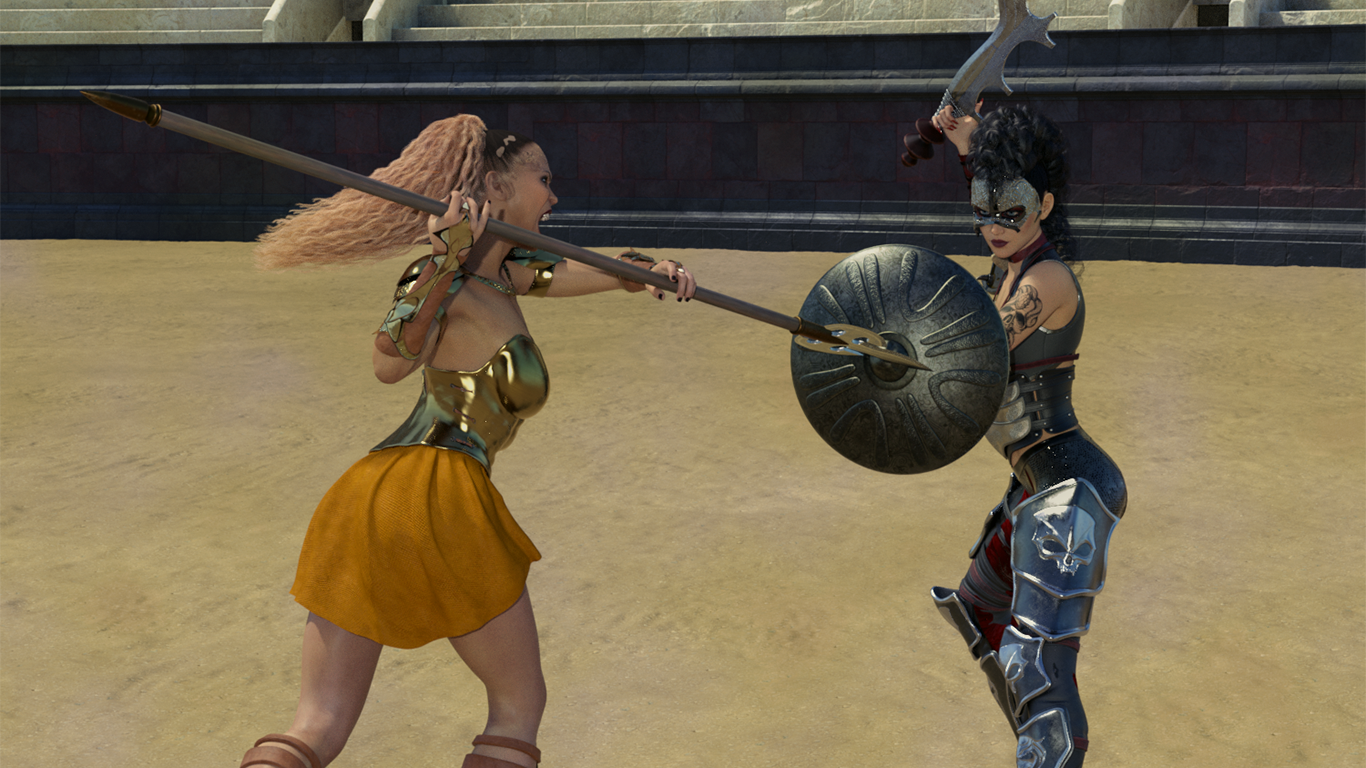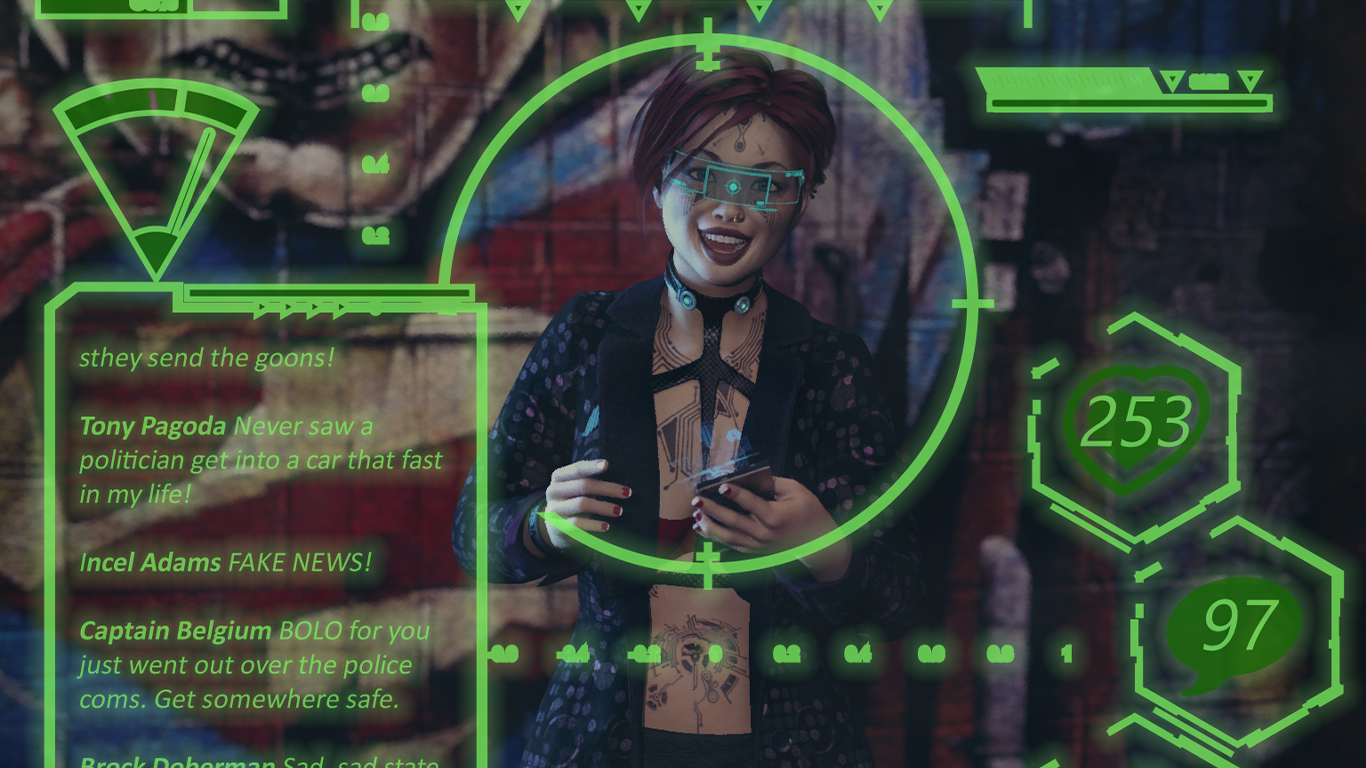We may earn money or products from the companies mentioned in this post.
Those of you who have been following along with the super-crappy but functional basic rules draft I’m working on know that I recently added the very broad strokes of the combat section. (If you haven’t seen the latest draft but would like to, check out my Patreon or join the Playtest Group on Facebook). There’s a damage system there, but it’s very much a starting point where I got some general ideas down on paper. Right now it’s more complicated that I’d like, even without playtesting I’ve realized that there’s a much faster death spiral than it needs, and there are a few things I couldn’t figure out how to make fit in an elegant way. Hopefully by next week it will be cleaner. For this week, I’m going to talk about some of the problems I’ve been running into with the combat system.
Advantage Ball
I first saw this term on the TV Tropes website, and it’s basically a scene defined by the advantage swinging back and forth between one side and the other. Nearly all combat scenes are games of Advantage Ball, but it can also apply to any scenes where two characters or sides are in competition. In order to keep the Scene exciting, there have to be times when the heroes seem about to win but have the tables turned on them at the last second as well as scenes where the heroes seem doomed and then make an amazing comeback.
The basic die mechanics of a game model Advantage Ball pretty well if both combatants or sides are evenly matched, but if the PCs are outclassed it feels like GM fiat and if the bad guys are outclassed it just becomes a pointless slog through their hit points. A version of Advantage Ball that supplements the basic dice math is super-easy to model in a one-on-one fight, but once a third character gets involved it turns into vague story-gamey shit where the individual character’s contributions get muted, denying players the simple joy of rolling a die and knowing they’ve killed something.
Let The Medic Sort It Out Vs. Dramatic Injuries
One problem with coming up with a satisfying combat system is that movies have contradictory rules, and it’s hard to come up with a system that allows both options. For example, in most fight scenes the wounds the characters take are vaguely defined during the battle. You might see The Rock get stabbed in the arm, kneed in the stomach, smacked in the kneecap, and punched in the face, but there’s usually no sense of which injuries are superficial and which ones are serious. If the hero does have a serious wound (and it’s usually just one per movie or episode), it doesn’t really affect him until after the fight (I’m fine writing that off to adrenaline).
On the other hand (especially in subsequent fights after the hero has received his serious wound), lots of movies feature “go for the leg” moments where the villains take advantage of a character’s injury or weakness to grab the advantage ball for themselves. Heroes sometimes do the same to villains (especially named ones), but it can usually be handled more abstractly because the bad guys are going down before the fight’s over anyway.
Instant Kills Vs. Plot Armor Vs. Secret Mortal Wounds
The most memorable deaths in movies and TV shows are often instant kills, especially if you weren’t expecting them (I’m thinking of something pointy). BUT you don’t want PCs dropping like flies, because even George R.R. Martin doesn’t treat his characters like planks in the Theseus’s ship that many RPG parties resemble. ALSO there’s a long tradition of characters kicking ass during the fight only to drop dead at the end of battle or reveal after the fight that they’ve sustained a mortal wound that will kill them at a dramatically appropriate time or allow them to sacrifice themselves for the others sometime in the very near future.
Combat Stunts Vs. Mechanical Overhead
There needs to be a way to make cool attacks have meaningful and logical mechanical effects without coming up with specific rules for every kind of cool thing a character can do. I want a flying spinning kick from the rafters with a somersault thrown in for good measure to have more effect than “I punch him,” but I don’t want to look up modifiers or special rules. Bennies can help encourage players to spice up their combat descriptions, but concrete bonuses and special effects seem to be far more effective.
Cosmetic Damage Vs. Stakes
Except for the previously mentioned dramatic injuries, most damage in fiction doesn’t really bother the character once the fight is over. Even though Bruce Willis is bruised and bloody and limping by the end of the movie, when the final fight rolls around he’s basically at full strength again. In the previous version of the combat system I went way too far in the “pain don’t hurt” direction: Stamina (hit points) basically measured when the fight was over. After the fight, the character healed all the way back up. I blame the airport fight in Captain America: Civil War. Playtesting revealed that RPG combat without any real consequences makes the fight scenes seem meaningless. It also gives the PCs no reason to use caution. If combat doesn’t weaken the PCs, there’s less incentive to avoid unnecessary battles (important for GMs like me who get bored with combat after a few rounds) and come up with clever plans. Fight Scenes need to have lasting effects that influence the character’s decisions without penalizing the characters so badly that their best strategy for defeating the big bad is bleeding on him until he drowns. Hopefully without forcing someone to play the Cleric.
Knockouts
As any Raymond Chandler (or James Bond) fan can tell you, sometimes the best way to move the plot along is to knock the hero out so the bad guys can take him somewhere more interesting. This is less common in stories with groups of protagonists, but in fights with multiple heroes, knocking one of them out for a few rounds is often a very useful tactic for keeping the advantage ball changing hands. In most games, characters only lose consciousness when they’re Mostly Dead, but there should also be Dukes of Hazzard knockout rules.
Healing
For a while I was thinking that in addition to the post-combat patch-up (another term I stole from TV Tropes), characters should get a certain amount of healing every scene. The more I think about it, though, the more I think healing needs to take place at the speed of plot. In some cases (like the airport scene in Civil War) it does make perfect sense for characters to be more-or-less fully healed when the next scene starts. In a lot of movies and (especially) TV shows, the scene changes are enough of a shift to justify off-screen downtime for healing. But we also need dungeon crawl rules for things like Die Hard or The Raid where all the scenes follow one another closely over a short span of time without giving the heroes much time to rest and heal up.
Basically, I just need to come up with rules that can support all of these contradictory goals in a way where each goal is only possible (or more accurately, most possible; we still want to leave room for fight scenes to break the rules in interesting ways) in the right dramatic circumstances. And make it so easy that I don’t completely hate running combat. That’s a reasonable goal, right?






